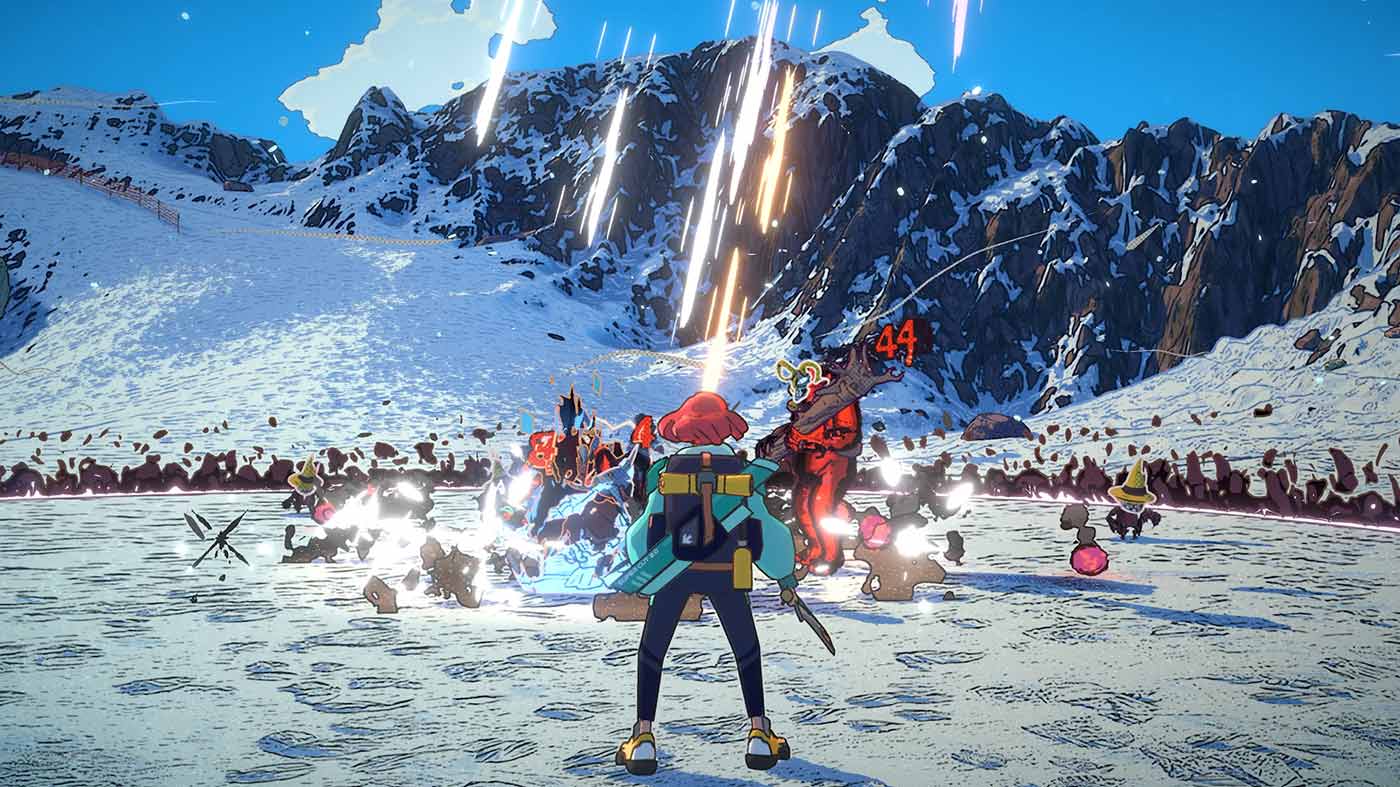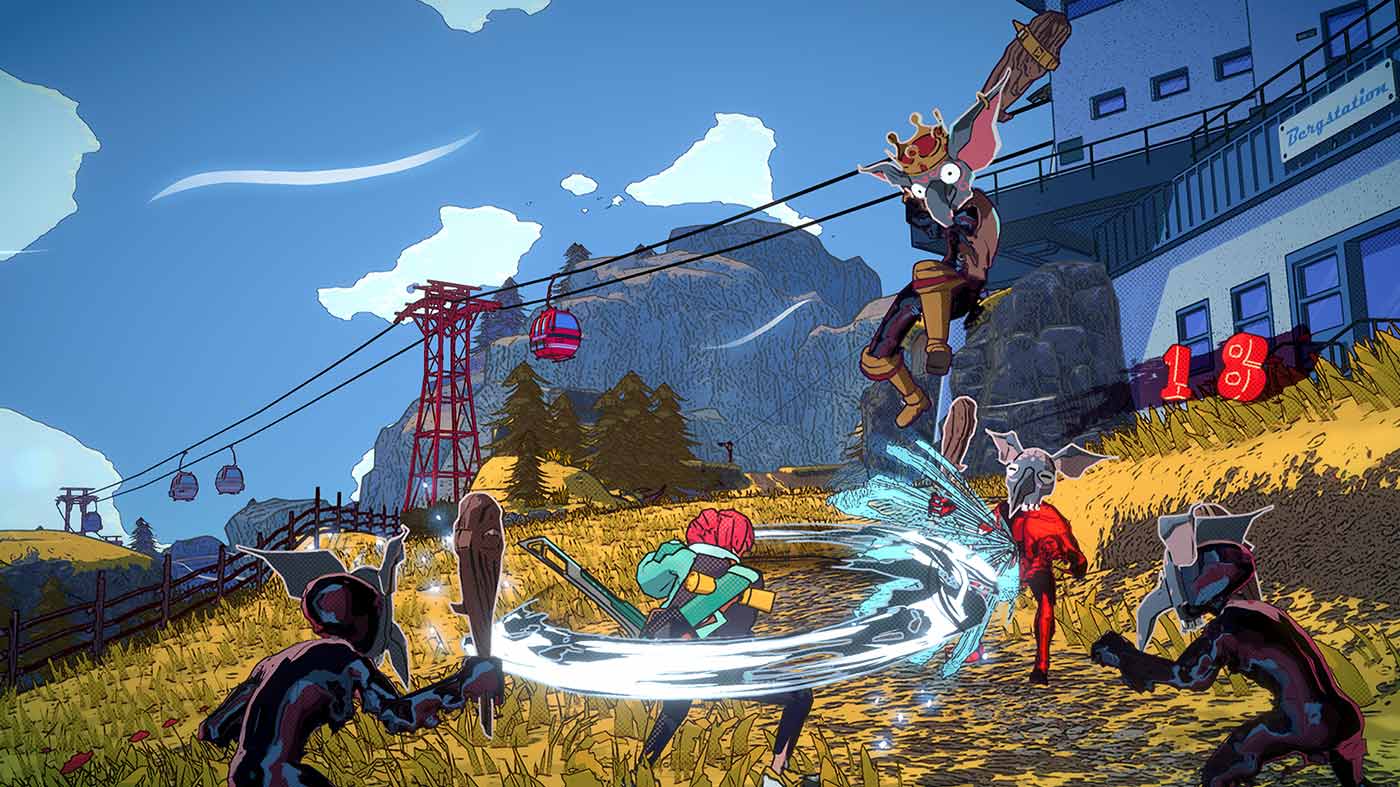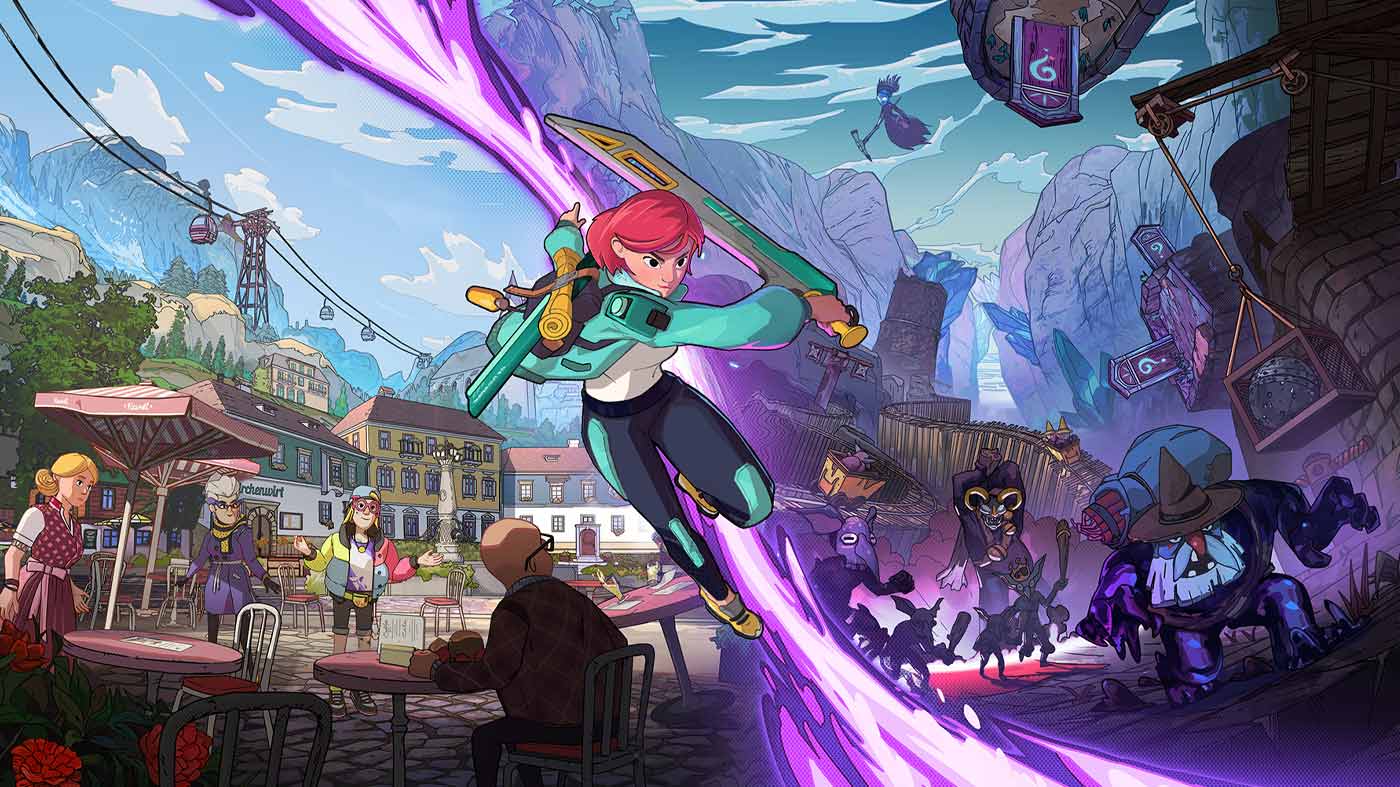As one who’s never understood the hype, Dungeons of Hinterberg is a unique case in that it single-handedly has left me wondering, based on its dungeons alone, whether I might have slept on The Legend of Zelda for all of these years. While the answer is irrelevant, I think that speaks volumes of just how fun and creative the core pillar of this weird, genres-in-a-blender Frankenstein game actually is. As a final product, it attempts to do too much and lacks focus and, more importantly, polish as each of its parts feel lesser-than when compared to the games it emulates—whether that’s Persona, Breath of the Wild, or any action game worth its salt.
Dungeons of Hinterberg begins with a getaway for its protagonist Luisa, a law student who retreats to the Austrian Alps in search of escape and adventure. She quickly grows familiar with the townsfolk, builds a rapport with many of them, and discovers an unsettling truth about the magic-borne dungeons that mysteriously appeared in the town, transforming it into the tourist hotbed that it is. I dig the way the game frames conquering these dungeons from multiple angles—what they mean to academia, “slaying” the monsters inside for sport, and their worth to the town and how far those in power will go to ensure the magic never dies.

Everything you experience in Hinterberg is presented through a very Persona-like four-block cycle that runs from dawn to dusk. The mornings and afternoons would basically be reserved for story beats and bookending the day’s events, while the evenings and nights would be for slaying, and shopping for resources before socialising with any one of the friends you make around town. As you’d expect, spending enough time to turn these acquaintances to friends sees Luisa reap rewards that feed into the game’s other systems, like loot and combat. Obviously it’s dependent on where you spend your time, but I found the cadence at which my combat rewards unlocked, and their proximity to the game’s ending, gave a sense of “too little, too late” in serving as a life raft for the game’s pretty vapid combat.
While you’re able to unlock combo multipliers through one of your alliances, the meat and bones of Dungeons of Hinterberg’s combat is rather basic. It’s a standard affair of light and heavy attacks, interwoven with well-timed dodges to whittle away at a creature’s health. There are also attack conduits, which are basically special abilities that cool down after use, and they’re certainly helpful in dealing quick bursts of damage—my favourite was the ability to call down a meteor shower in the arena. That said, I definitely do not recommend punching above your weight as taking on waves of enemies several levels above you will spell a quick end for you. There’s definitely a challenge to be found in the game’s combat, it’s more that it becomes mind-numbing and never excited me quite like the puzzles did.

Each of Hinterberg’s regions has a unique magical hook to it that is confined to that particular area after you earn it from the skill shrine. Whether it’s the hard light snowboard you can use to rail grind to upper decks of a snowy tundra, or enormous jelly blocks you’d use to get a leg up on an unreachable ledge, these powers are also woven into combat situations including one of the most frustrating boss encounters I’ve experienced in a while where I had to take advantage of the infrequent opportunity to lob a plasma orb into a hose on the big baddie’s back like it was the trench run on the bloody Death Star. Most other applications for Luisa’s powers mid-fight were great and added layers to a combat system that needed something else, however I nearly put the game down at this point.
While the social aspects of hanging out in Hinterberg served to spotlight the magic of friendship, the real magic can be found in the game’s twenty-five, or so, dungeons. A mix of combat and thoughtful puzzle mechanics, they’ve honestly made me ponder on my likely controversial aversion to games like Breath of the Wild, as there’s been something so enriching about the intuitive nature of peeling back the intricacies of these dungeons to earn that stamp at the end—like I’d cleared customs at the border of a strange land. With a handful of biomes and their respective skills to riff on, there’s an undeniable breadth of experiences to be found, including ones that introduce once-off, perspective bending levels and shapeshifting environments with subtle, recognisable changes each loop that signal the maze’s exit. It can be very clever in its design and I definitely took joy, like a real Hinterberg tourist, in chasing all of the stamps on offer.

For a game so intent on emulating the chic style of the Persona games, it truly fumbles the bag at a user interface level with some ghastly font choices and menus that didn’t exactly inspire me to spend any meaningful time within them. Fortunately, the remainder of Dungeons of Hinterberg is like a charming, eccentrically coloured comic resembling a paint-by-numbers gone mad. The alpine tourist town runs the seasonal gamut, offering not only beautiful snowy slopes but stunning autumnal woods, and the monsters that inhabit it are a fun design mash-up of miry goo adorned with masks inspired by Austrian fable. It might look a little stiff in action, but there’s no denying Dungeons of Hinterberg is a pretty game.
Nearly all of Dungeons of Hinterberg’s many moving parts feels like a “something borrowed” from other video games that have invariably done that thing better. The dungeons themselves are a clear highlight and their clever design goes a long way to shouldering the spirited sense of adventure that moves the game along. Had they managed to make the loot and social rewards matter instead of routinely handing out the next leveled-up piece to practically open the door to the next dungeon on the list, I might have reflected upon my time in Hinterberg more favourably.




